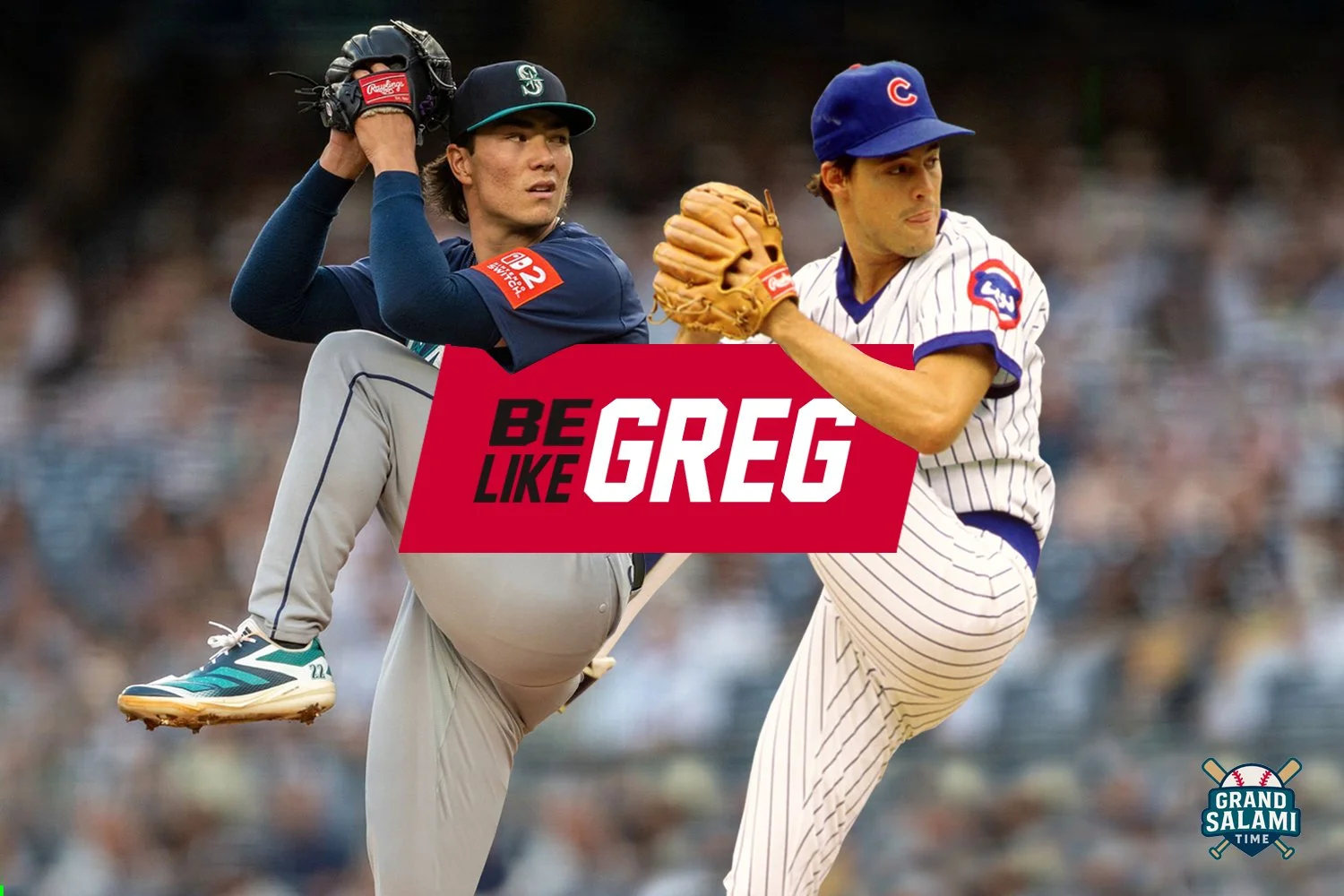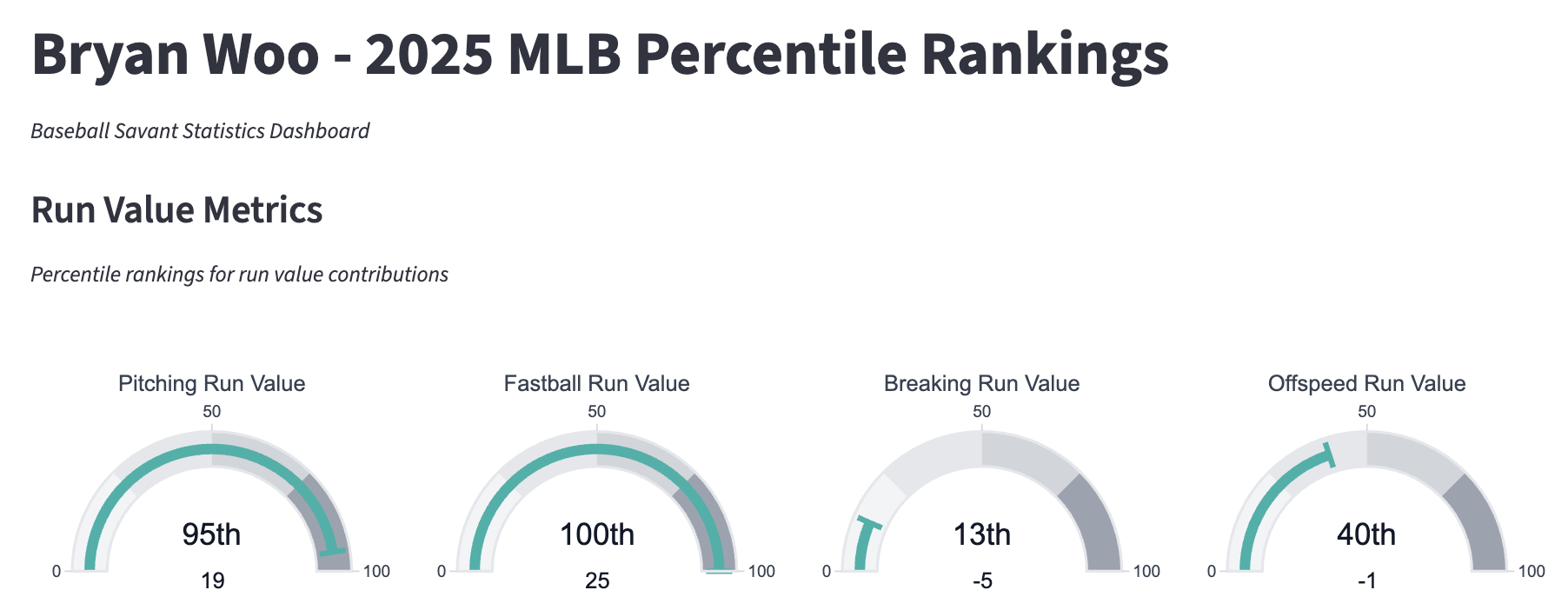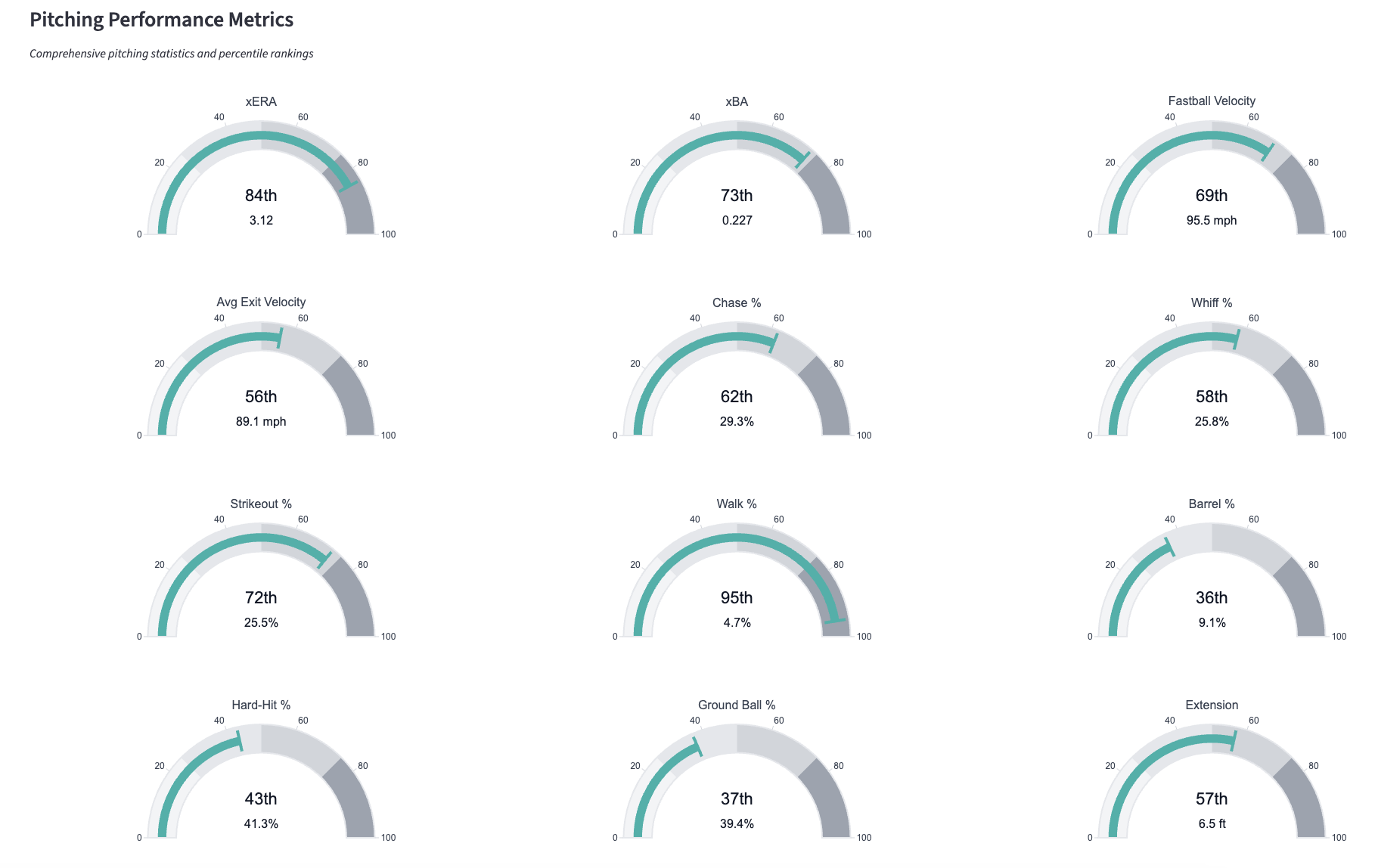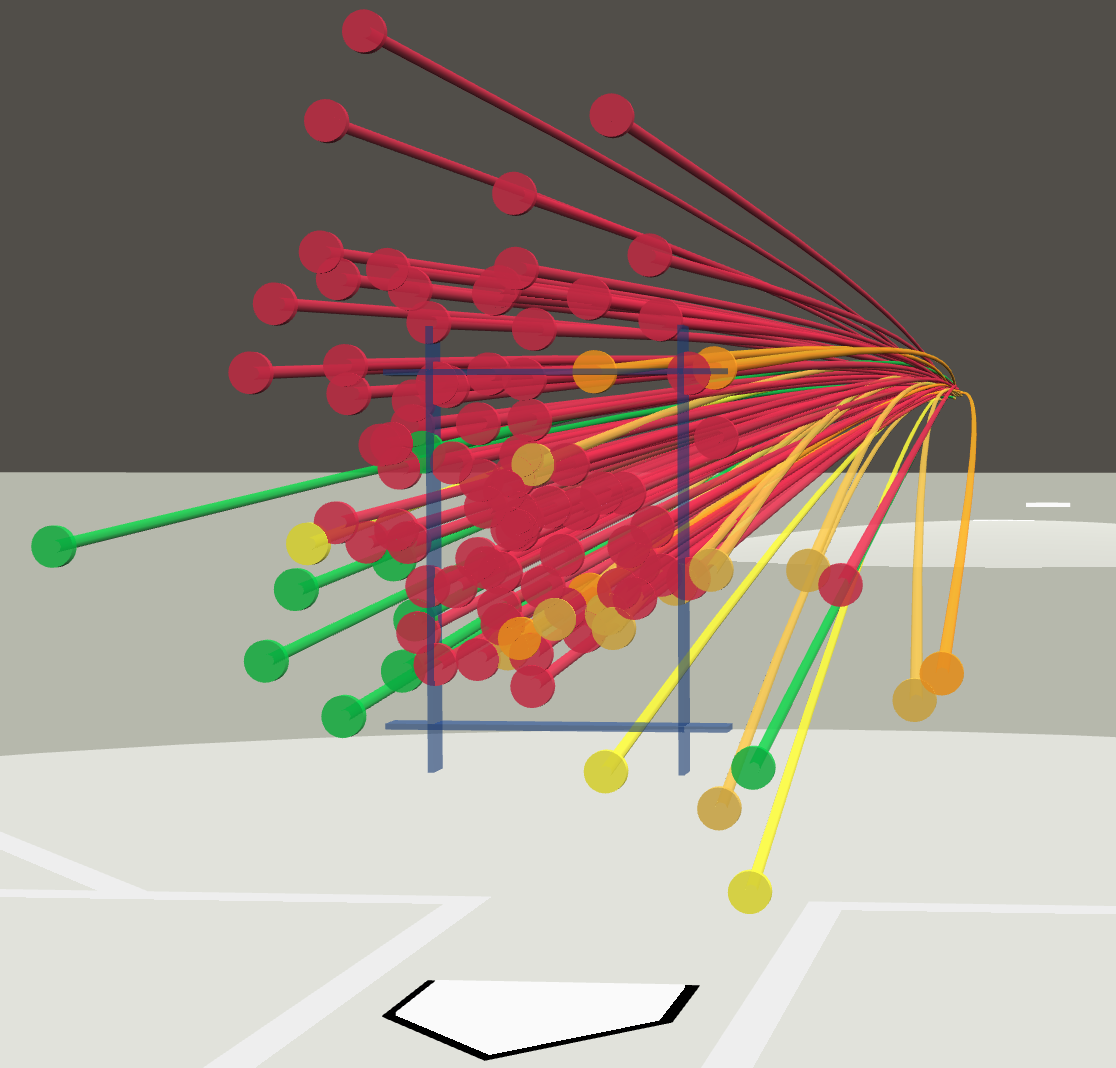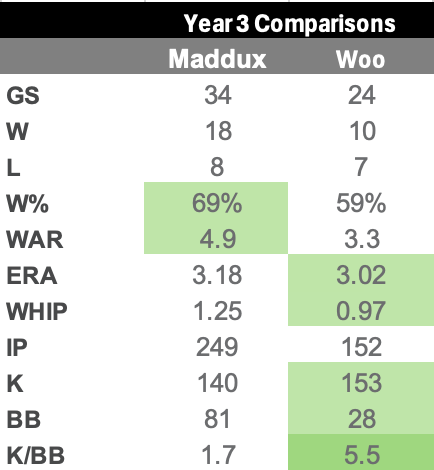Is Bryan Woo Baseball’s Next Greg Maddux… or Something Else Entirely?
Greg Maddux (Photo by Ron Vesely/MLB Photos via Getty Images); Bryan Woo (Photo by Michael Urakami/MLB Photos via Getty Images)
Without Tommy John surgery, Bryan Woo wouldn’t be an All-Star. He probably wouldn’t even be playing baseball anymore. And yet here we are, with Woo as the leader in quality starts in 2025 (as of August 17). What in the Felix Hernandez is happening here?
Foolish Baseball gave us a great breakdown on YouTube detailing Woo’s rise from the ashes after a seemingly mediocre college career at Cal Poly—that ended with a 6.49 ERA and surgery in 2021—to a dominant starting pitcher heading into the 2025 MLB season. To put it perhaps too simply, Woo’s arm angle and low release point make up for his seemingly average numbers, particularly his sub-par spin rate on breaking balls and solid, but not elite velocity. But where he appears to lack in some areas, he shines brighter than nearly everyone in others.
Baseball Savant pitching percentile rankings as of 8/17/25, converted into our Grand Salami Time Charts
Here’s where it gets really good. Woo ranks in the 100th percentile in Fastball Run Value; that is to say, in a world of sweepers, slurves, and Matt Brash sliders, his get-out pitch is his four-seam fastball, which he regularly dots on the upper margins of the strike zone. He’s astoundingly accurate with all of his pitches, borne out by his being in the 95th percentile in BB%. He’s walked two batters or fewer in every start this season, and in six starts in May, he threw 38.1 innings and walked two batters total.
Woo entered the season as the Mariners’ fourth starter behind three players with Cy Young Award potential in Logan Gilbert, Luis Castillo, and George Kirby. Let’s be honest and admit Tarik Skubal has all but won the award with less than two months to go in the season, but Woo is the only Mariners pitcher listed in BetMGM’s top ten Cy Young candidates. All that to say, Woo has shone brighter than the rest of the starters in a stacked rotation.
Also, speaking of Cy Young, after Woo pitched six innings on August 16 and only walked—you guessed it—two batters, he became the only pitcher to open a season with 24 six-plus inning starts with two or fewer walks since Young did it 30 times in 1905.
What about Greg?
If you grew up in the ‘90s watching baseball, you knew Greg Maddux, aka the Professor aka Mad Dog. He claims to have set hitters up with pitches intentionally left over the plate just to strike them out months later in higher-stakes situations, and who are we to question one of the greatest starters to ever play the game? Pitching in the juiced-ball era, Maddux was a low pitch count, ground ball machine, winning four consecutive National League Cy Young Awards in a row, the last of which came in 1995 along with a World Series ring with the Atlanta Braves.
Is Woo going to win four straight Cy Young Awards? The Mariners’ rotation is so deep and top-heavy, he may not even be the best starter on the roster—ever. Greg Maddux allowed 30 extra base hits in 1995. Woo may allow 30 home runs by the end of 2025. So how can Woo be like Maddux—baseball’s patron saint of diabolical precision and psychological warfare on hitters?
Maddux was a paragon of efficiency and utilized his full arsenal to deceive hitters, inducing weak contact, i.e. ground balls. Woo is a “fastballs first, ask questions later” type of guy. Perhaps their biggest similarity was a simple one: throwing strikes. Forget for a moment that umpires seemed to have a handshake agreement with Maddux to expand the strike zone to reach the batter’s boxes. Attacking hitters is the name of the game for both, but Maddux peppered the low corners of the zone. Woo gets away with putting the ball in what appears to be very hittable areas of the strike zone.
Visual credit from Baseball Savant
Red = four-seam fastball
Focus on Woo’s four-seam fastball distribution above in red from a game against the New York Yankees on July 10. Why highlight this 6-5 loss, which was made all the more notorious thanks to Jomboy’s breakdown of what happened later? Because Woo was daring the Yankees with his fastball all night. Out of context, it looks like a lot of middle-middle meatballs. Add in the “ride” highlighted in Foolish Baseball’s video, Woo pitched seven no-hit innings before conceding two hits in the 8th—and stepping aside for the bullpen to blow the game.
As far as comparisons go, peppering the middle of the zone with fastballs might just be as far from Greg Maddux as you can get. If we’re talking consistency and accuracy, however, there is some overlap. The Venn diagram of the two might not be very close, but that much is true.
That overlap shows up in the numbers, too. Both became All-Stars in their third season—but Woo’s strikeout-to-walk dominance was far ahead of where Maddux was at the same stage. Woo strikes batters out at a clip of 9.1 per nine innings and boasts a K/BB of 5.5 in 2025, while Maddux never achieved such solid K/BB rate until his 10th season in 1995. Surprisingly, Maddux only had a 1.7 K/BB ratio in his 3rd year, which would be below today’s league average. Maddux’s K/BB rate rocketed to 8.9 by 1997 which is elite.
The above chart shows a side by side comparison of Greg Maddux vs Bryan Woo in their 3rd MLB Season
Just as the Mariners’ Kirby has drawn comparisons to Maddux for his accuracy, Woo has a similar track record. Part of Woo’s appeal is his consistency. As the only pitcher in MLB to pitch at least six innings in every start this season, Woo eats innings and puts the team in a position to win nearly every start he makes. If Woo eats, Maddux feasted, to the tune of 250+ innings pitched in three consecutive seasons and never pitching less than 194 innings in the final 21 (yes TWENTY-ONE) seasons of his career from 1988-2008.
The Verdict?
Comparison may be the thief of joy, but Bryan Woo is having an objectively strong season by nearly every metric. If he continues refining his breaking balls, he’ll have a more complete arsenal—one that echoes the prime years of Greg Maddux. Stylistically, though, the similarities mostly end there.
The advent of the automated ball-strike (ABS) zone—robo-umps, if you will—adds a wrinkle to any cross-era comparison. Maddux built a reputation for painting corners and often benefited from a generous strike zone. Woo, by contrast, has to be more precise. There’s no room for human error in his favor; the calls are what they are.
Even if Woo’s biggest accolade this year is making the AL All-Star team, your projected fourth starter leads the league in quality starts and has emerged as the de facto ace—at least for now.
Long story short: aside from his accuracy and aggressive approach, Woo isn’t all that similar to Maddux. But in his third MLB season, Woo is arguably ahead of where Maddux was at the same stage. Of course, Maddux blossomed into an elite pitcher over a 23-year career. If Woo continues to develop and somehow sustains that kind of longevity, it’s easy to imagine future fans comparing the next rising “good control” star to Bryan Woo—not Greg Maddux.
They’re different pitchers. Woo leans on above-average velocity and vertical ride from a low release point. Maddux was a magician—outthinking hitters with pitch sequencing and surgical command. Still, Woo and Kirby can rest easy knowing fans are even entertaining the comparison.
Whether he’s the next Maddux, Glavine, or Cy Young himself, Bryan Woo is worth the price of admission—and then some.
-Evan Franklin

